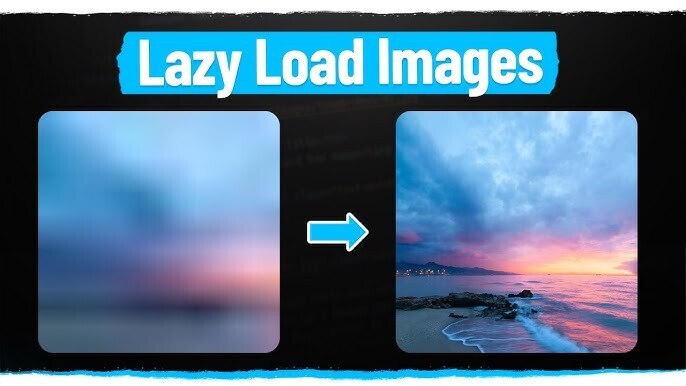Lazy Loading in React: Improving Performance with Dynamic Imports
Lazy loading in React allows you to optimize the performance of your application by splitting the code into smaller chunks. Instead of loading the entire application upfront, lazy loading loads only the code that's needed for a particular part of the app when it's actually required. This can significantly improve the initial loading time of your application.
React provides two main features to implement lazy loading: React.lazy() for dynamic imports and React.Suspense to handle loading states.
⚡ What is Lazy Loading in React?
Lazy loading helps break your application into smaller pieces (chunks) so that the code is only loaded when it’s required. React provides the ability to dynamically import components only when they’re about to be rendered.
Why is it Important?
- Improved Initial Load Time: By loading only the code that is needed, you reduce the initial load time of your application.
- Better User Experience: It provides a faster initial render and a smoother experience, especially in large applications.
🧩 How Does Lazy Loading Work in React?
React uses React.lazy() to dynamically import components. This function allows you to load a component only when it is needed. However, React does not automatically handle the loading state; that's where React.Suspense comes in. Suspense lets you specify a fallback UI that will be shown while the component is loading.
Step-by-Step Example
1. Create a Component to Lazy Load
// Products.js
import React from 'react';
const Products = () => {
return <div>This is a lazy-loaded component!</div>;
};
export default Products;
2. Use React.lazy() to Dynamically Import the Component
const Products = React.lazy(() => import("./components/products/Products"));
3. Wrap the Lazy-Loaded Component with Suspense
import React from "react";
import ReactDOM from "react-dom/client";
import "./index.css";
import App from "./App";
import PageNotFound from "./components/PagenotFound/PageNotFound";
import { createBrowserRouter, createRoutesFromElements, Route, RouterProvider } from "react-router-dom";
import Home from "./components/Home/Home";
const Products = React.lazy(() => import("./components/products/Products"));
const router = createBrowserRouter(
createRoutesFromElements(
<Route path="/" element={<App />}>
<Route path="/" element={<Home />} />
<Route
path="products"
element={
<React.Suspense fallback={<div>Loading...</div>}>
<Products />
</React.Suspense>
}
/>
<Route path="*" element={<PageNotFound />} />
</Route>
)
);
const root = ReactDOM.createRoot(document.getElementById("root"));
root.render(<RouterProvider router={router} />);
In this example:
- The
Productscomponent is dynamically imported usingReact.lazy(). - The
Suspensecomponent is used to display a fallback UI (<div>Loading...</div>) while theProductscomponent is being loaded.
4. Navigate to the Route to See Lazy Loading in Action
Once the user navigates to the /products route, the Products component will be fetched and rendered only when required. This reduces the initial payload size and improves the performance.
⚠️ Important Notes
-
fallbackprop in Suspense: Thefallbackprop is mandatory in theSuspensecomponent. It specifies the UI to show while the lazy-loaded component is being fetched. You can customize it according to your needs, such as displaying a loading spinner or a skeleton screen. -
Multiple Lazy-Loaded Components: You can use
React.lazy()andSuspensein various parts of your app to implement lazy loading for multiple components.
🚀 Conclusion
Lazy loading is a simple yet powerful technique that can drastically improve your React app's performance. With React.lazy() and React.Suspense, you can efficiently manage when components are loaded, which helps reduce the initial loading time and enhances the overall user experience.
Start using lazy loading today and see the difference in performance for yourself!








Nice